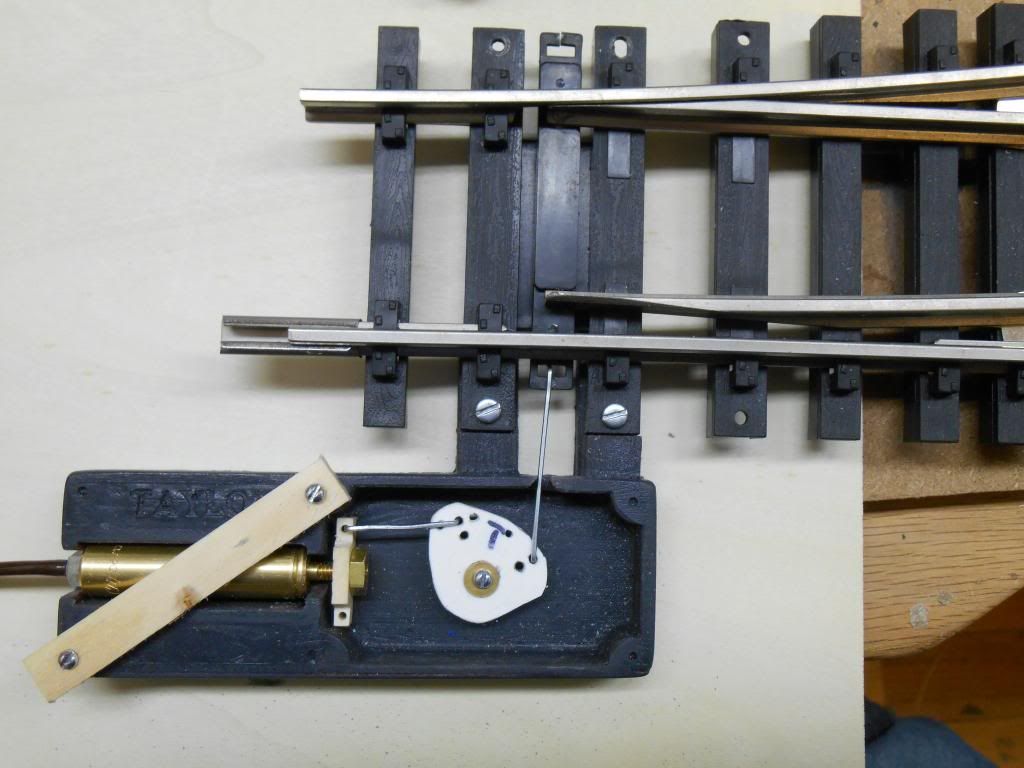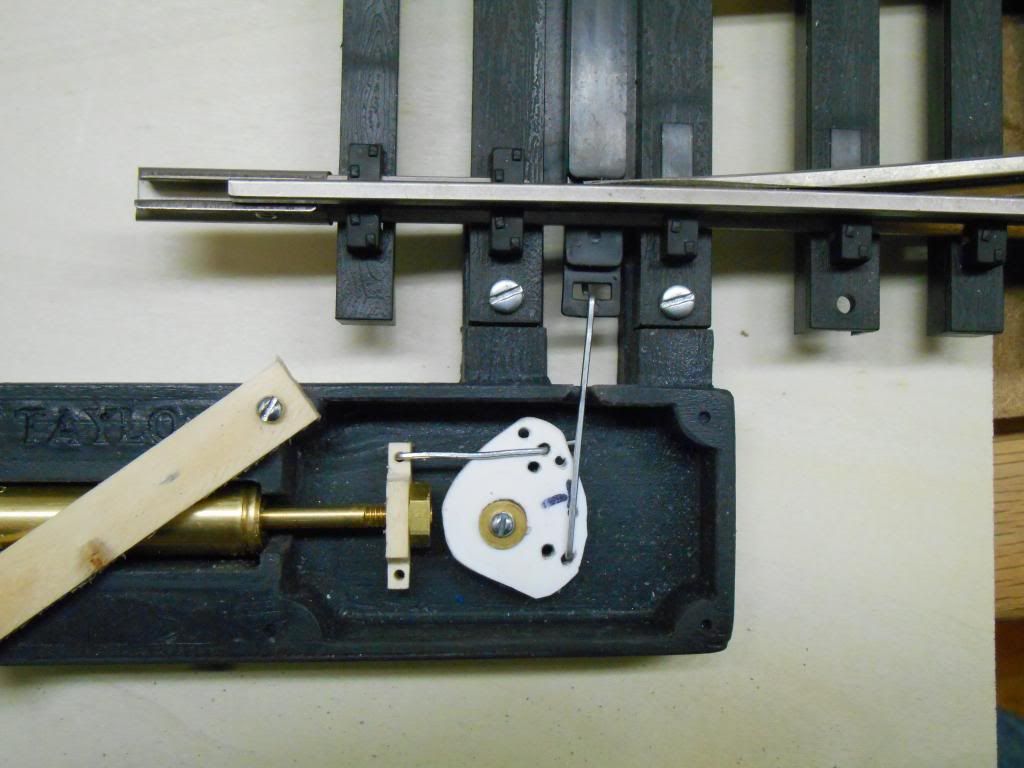I have long desired to make my pike the easiest that I can to run trains on, with the least maintenance, and striving to keep it more enjoyable, and least work and worry.
From the dream stage to the finally buying the track I set upon some goals. 1st, DCC operation, It really caught my attention and allows me to do some stuff the way I want. Wireless throttles of course! I run the Digitrax System. 2nd, All Stainless steel track with as wide as I can radii. And switches (Aristo). And 3rd, Air controlled Switches with remote DCC control from walk around (or sit around) throttles.
Before I bought my first switch I settled on control using the E-ZAir System. I purchased an 8 switch package containing motors, 12V Clippard Solenoids, Tubing, Fittings and all.
9 years later and I’m finally reached the point that I feel that I’m ready to install them. During that time period Loy’s Toys, my DCC mentor is out of business. And E-ZAir has shut down. And I have learned a whole lot more then when I started this journey.
A couple of companies have stepped into the Air Switch market to pick up the slack, and all of them have the same basic idea and products, with the same limitations as I see them. Its these limitations that have made me jump into making my own (and what I think is better ) air switch motors.
Here is the problem with there motors on my lay out. Clearance. And the fact that they only have the ability as purchased to push the points one direction.
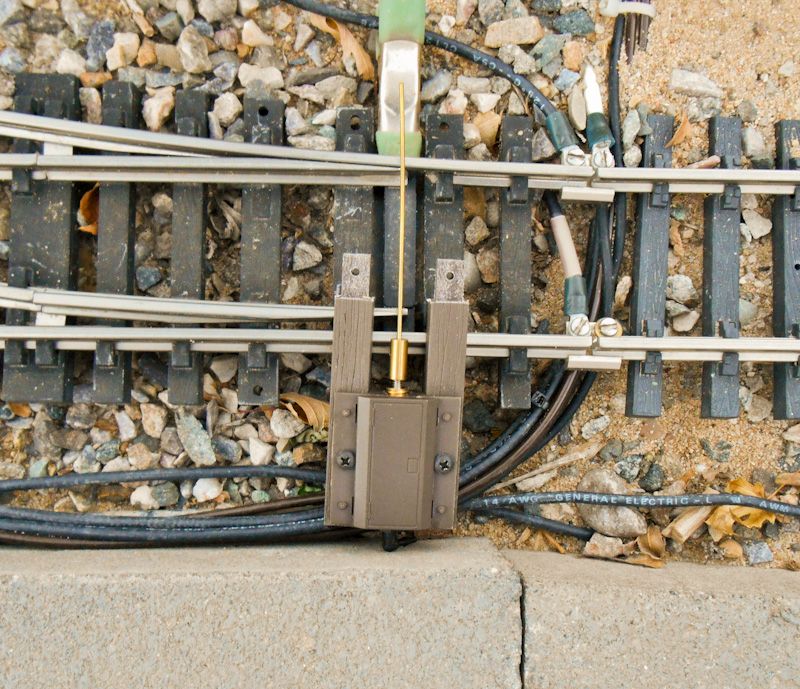
Note the position of the motor, it’s mounting legs, and that it would have to be charged (air pressure to the cylinder) all the time to keep the thru (mainline) running.
Here is why you can’t mount these type of motors on the other side of the switch.
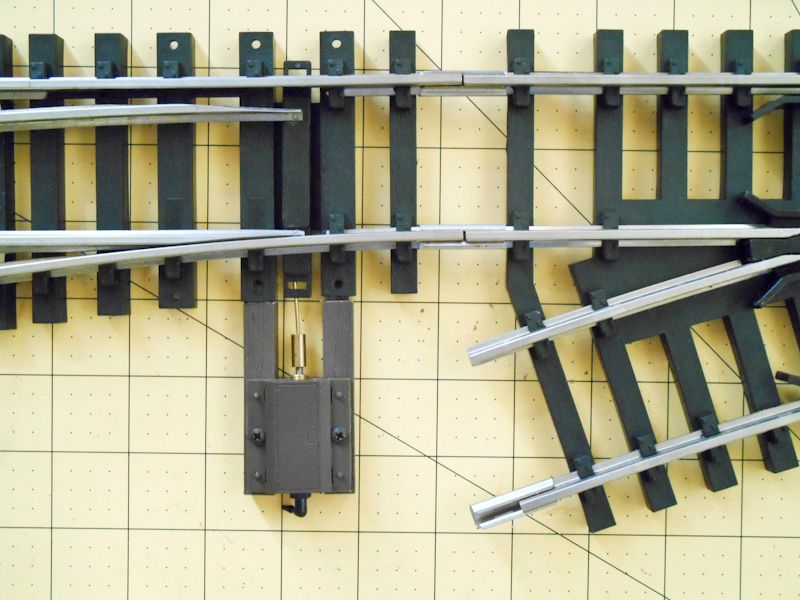
I have 8 switches that fall in this interference category of no room to place them without issues. And I will need about 20 more motors before I’m done.
The most obvious solution would be to have the existing motors turned 90 Deg. on axis and use a bell crank to activate the points. My thoughts are why pay a premium price for a product and then have to extensively modify it, so that it can be usable? I think that I can build a better mouse trap for my needs and push or pull the points from either side of the switch.
I studied their design, scratched out a couple of drawings and thought that I would have ago of it. Started by finding the Clippard (industry leader) cylinder that would fit my needs. Ordered up a few to test out my design.
Cobbled up a proof of concept test unit.

Works from both sides, Pushing the points and Pulling the points.
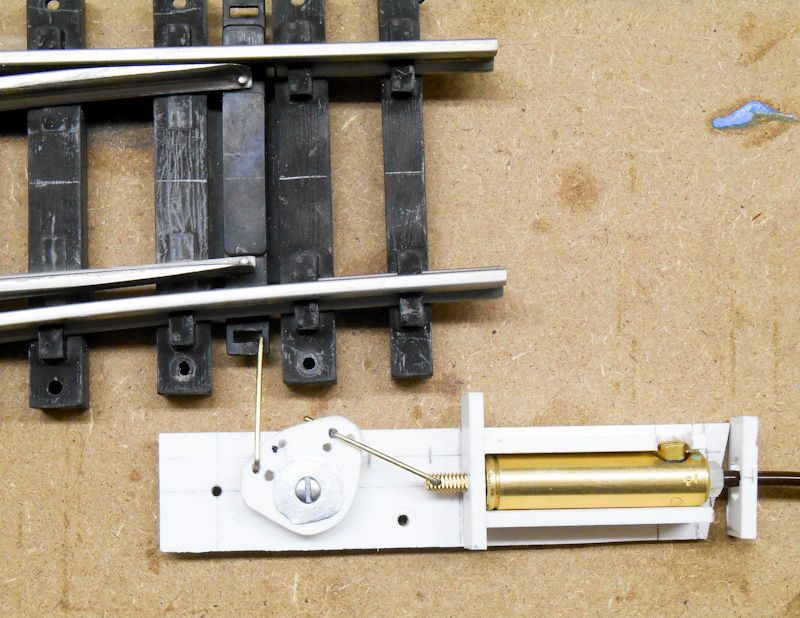
Using a series of different holes in the bell crank I played with the ability to flip the crank R to L and control the stroke of the rod to move the points.
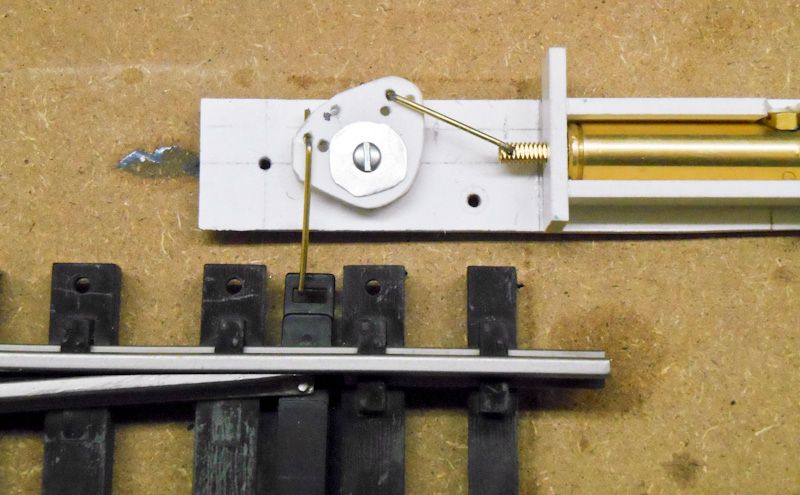
I then built me a prototype to make a mold from so I can cast 20 more.
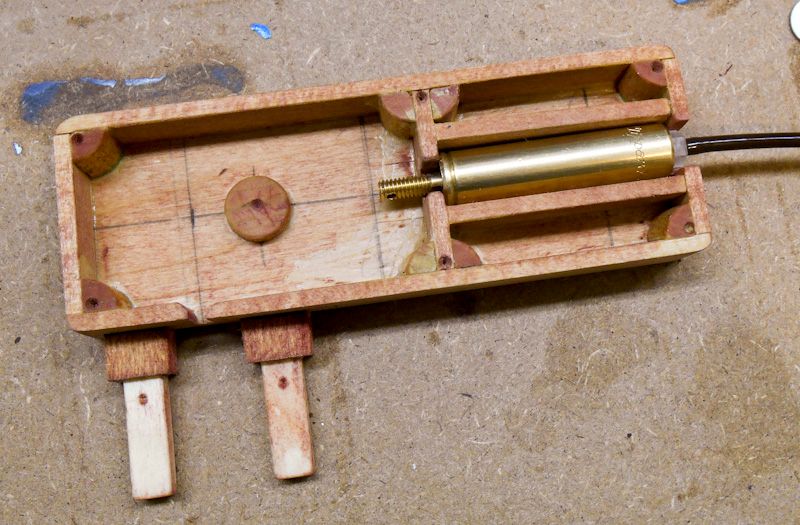
The Mold:
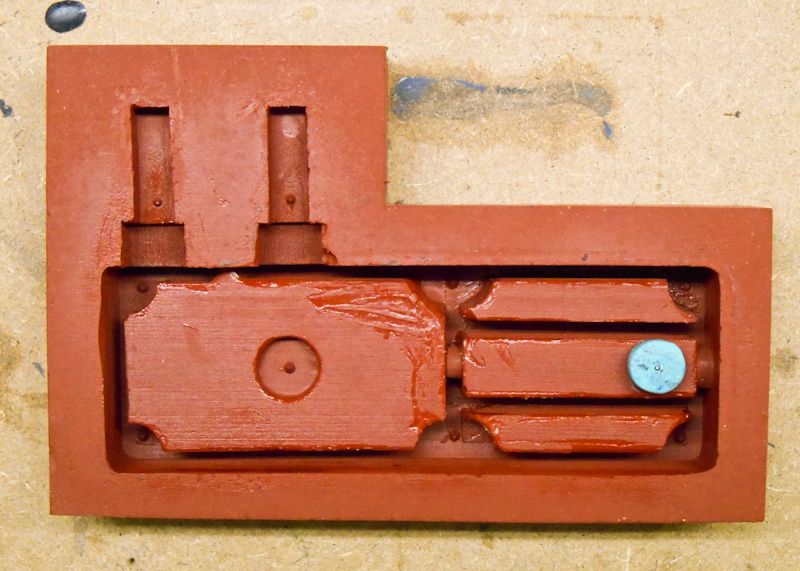
And the Switch Motor casing.
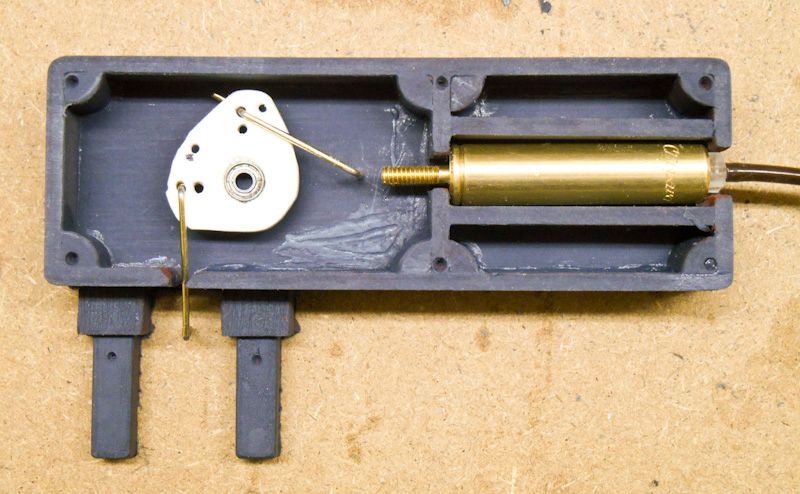
Test fitted in the Push the points mode.
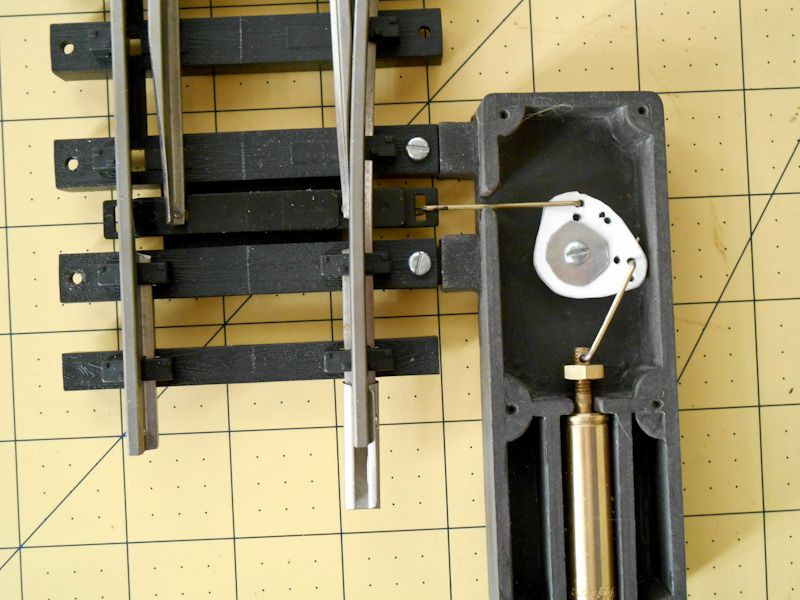
And in the Pull the points mode.

The motor works like a charm. Here is my test set up.
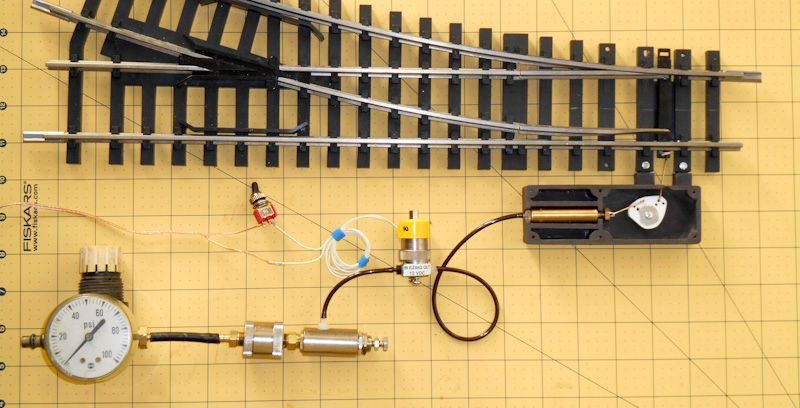
Starting from the bottom left to right, High pressure air regulator from compressor, to a filter, to a regulator to 35psi, out to the solenoid, which is controlled by 12Vdc, letting the air flow to the cylinder, pushing the plunger, turning the bell crank and pulling the points to the other position. Tah Dahaaa!
And the bell crank in the other position for pushing the points.
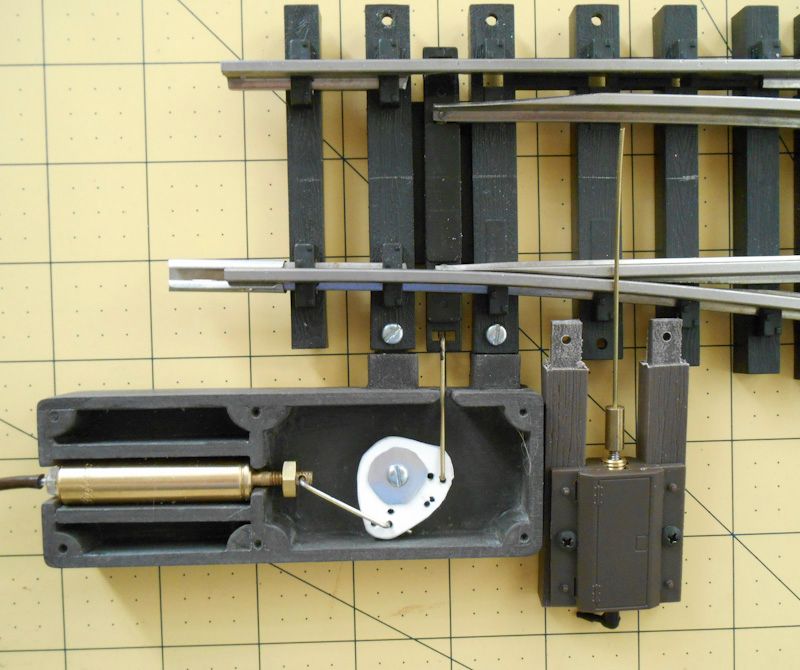
I have more work to do to the system, Designing and molding a good weather resistant cover, Prototyping a bell crank, for molding in metal. And coming up with a piece to strengthen the Aristo craft Point bar’s weak connecting point.
I’m wide open for comments, and flaws that you might be able to see that I missed, and any input that you might have for me before I get to far along.
Once I get these working well, then I’ll be begging Greg E. and all, for the help to wire up their controller to the DCC system, and manual switch control.
